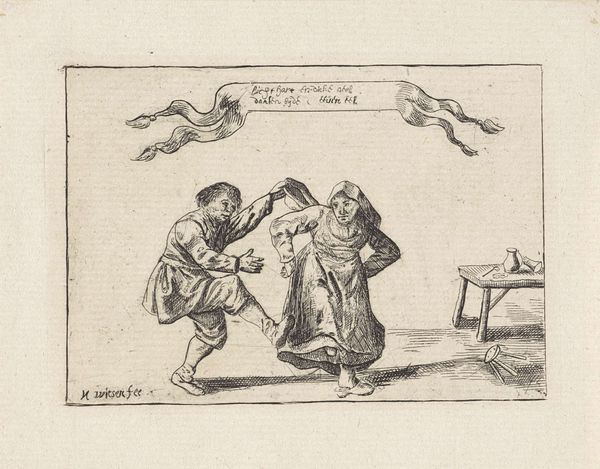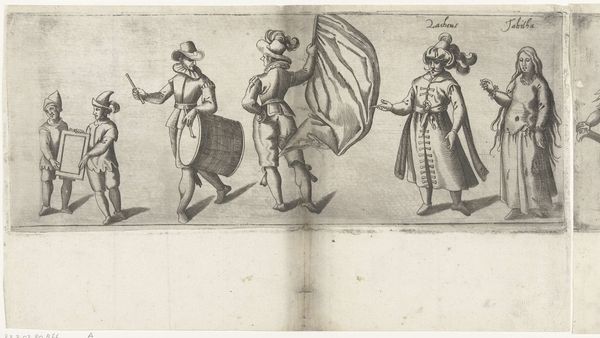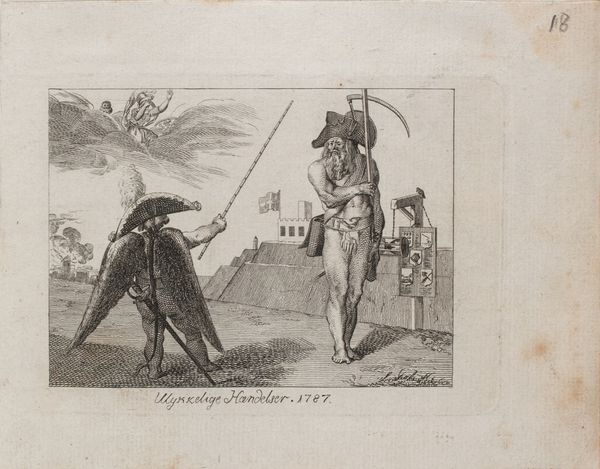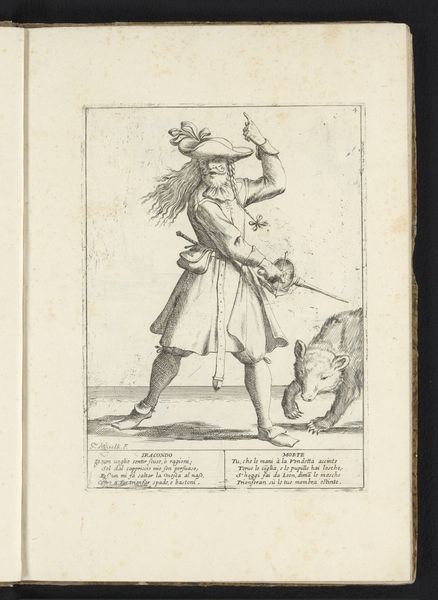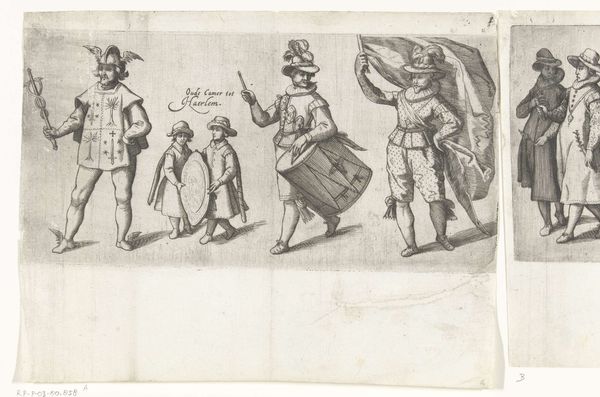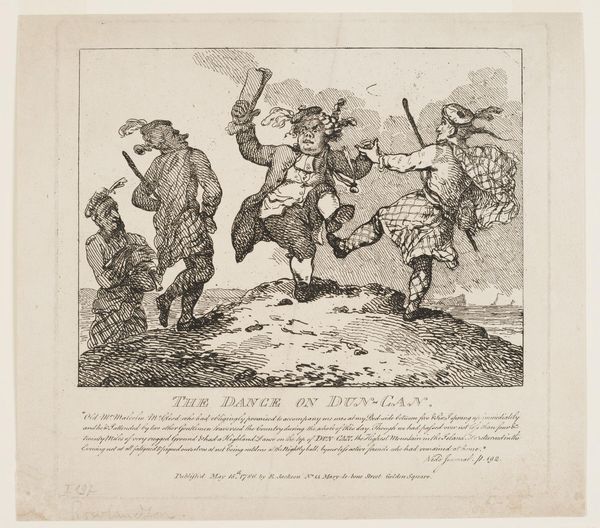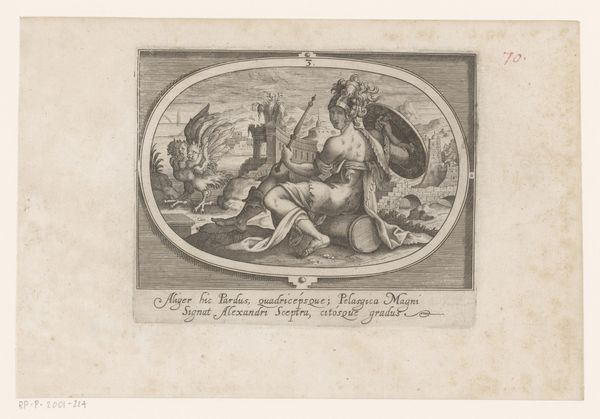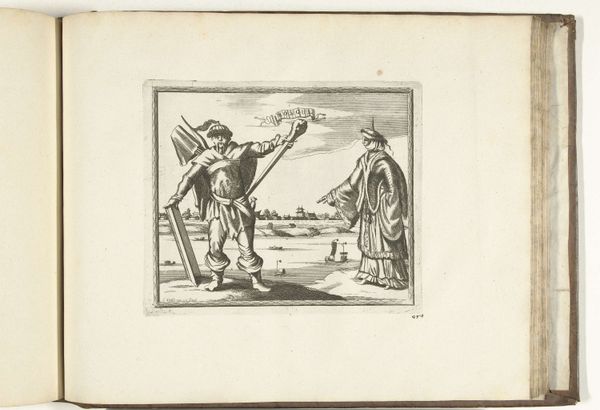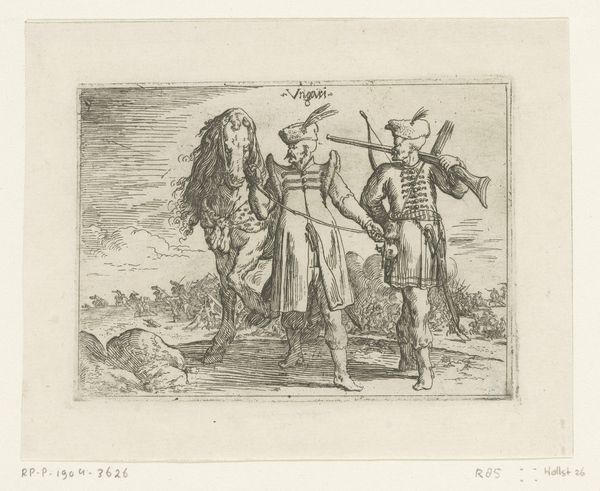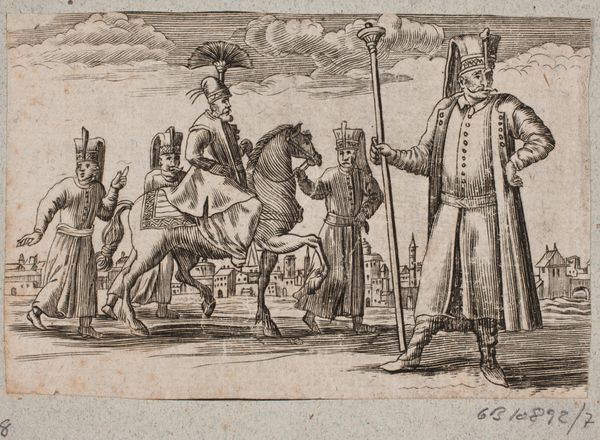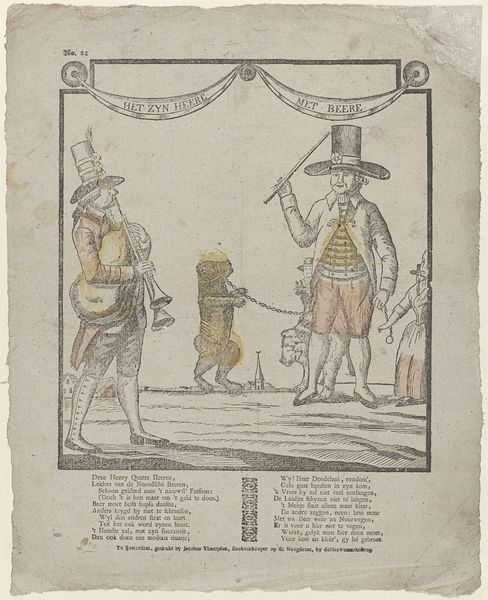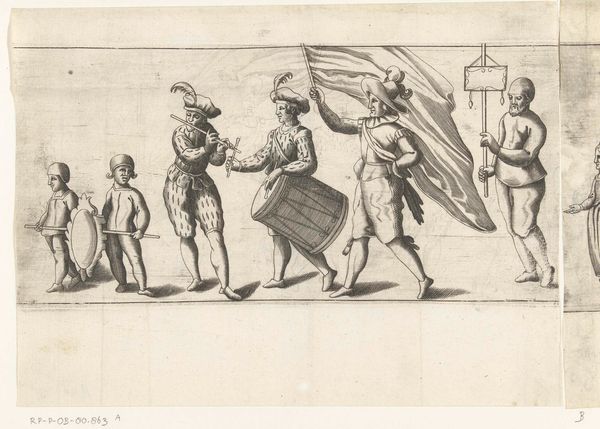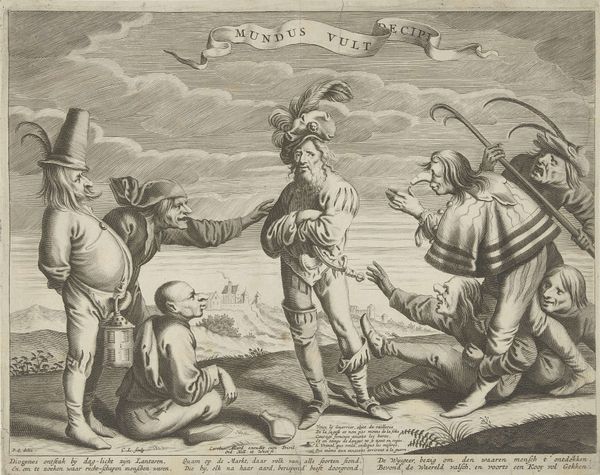
Callot figures; two children carrying a cartouche to left, a dwarf in a plumed hat carrying a standard at right, from 'Six grotesques' (Six pièces de figures grotesques) 1684
0:00
0:00
drawing, print, engraving
#
drawing
#
baroque
# print
#
caricature
#
figuration
#
engraving
Dimensions: plate: 5 3/8 x 7 5/8 in. (13.6 x 19.3 cm) sheet: 6 7/8 x 10 1/16 in. (17.5 x 25.5 cm)
Copyright: Public Domain
Editor: This is "Callot figures; two children carrying a cartouche to left, a dwarf in a plumed hat carrying a standard at right, from 'Six grotesques'," an engraving made in 1684 by Agostino Mitelli II. The figures look like caricatures from a carnival procession. What can you tell me about this work? Curator: Well, its humor speaks volumes about the evolving role of art in society during the Baroque era. Think about it: courts and the church still exerted tremendous influence, yet here’s Mitelli, engaging in caricature, a form of social commentary previously confined to more private circles. How does this strike you, knowing its political moment? Editor: I suppose I'm surprised. Were people free to create art criticizing the elite? Curator: Not exactly "free," but the lines were blurring. The market for prints expanded rapidly, so while royal patronage remained important, artists also sought wider audiences through satirical pieces like this. Consider the tradition of commedia dell'arte—would that give you some context? Editor: Yes! The exaggerated features and costumes are similar. I guess it makes sense that the artist would make political comments in caricature, reaching an audience through print. Curator: Precisely. The ‘grotesque’ aesthetic allowed artists to push boundaries. How do you interpret the presence of the two children flanking the central cartouche? Editor: Well, given what we've discussed, perhaps they symbolize innocence being exploited, or burdened by authority, even if playfully? Curator: That’s astute. By placing seemingly harmless figures within this tableau, Mitelli highlights the societal impact of power. Did the art change how you thought about historical norms of the 1600s? Editor: It really does. I came into this thinking that the powerful were distant from ordinary people, but even back then artists took bold creative risks. Thanks for providing socio-political context; I'll definitely use that information.
Comments
No comments
Be the first to comment and join the conversation on the ultimate creative platform.
